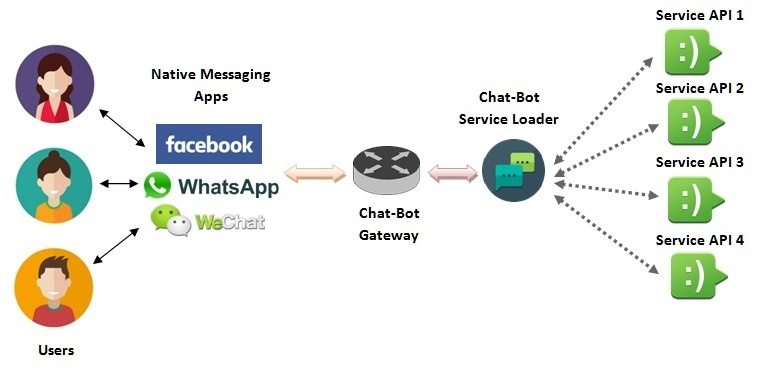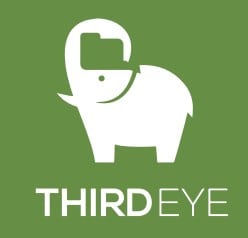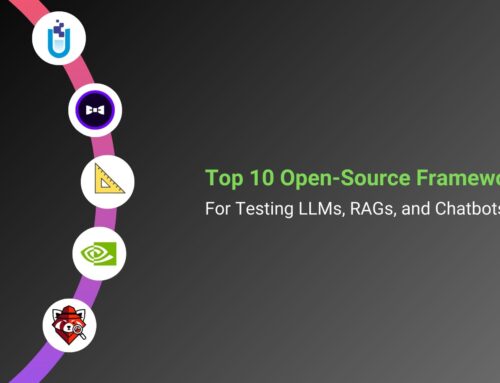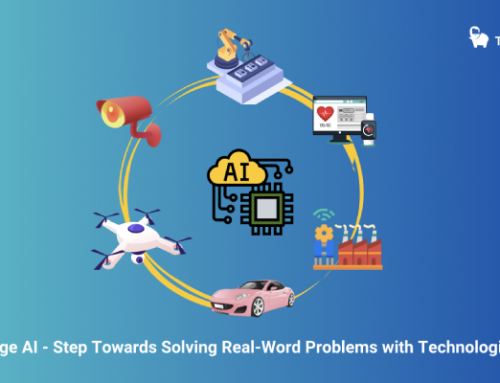The Rise of the Messaging Bots….
Following the overwhelming success of “Watson” on the popular American TV Game Show “Jeopardy”, IBM has dedicated itself to improving the technology available and the experience around building conversational applications through Smart Conversational Chatbots, or “Smartbots”!
It’s a reality that businesses today are all fired-up for a Bot explosion! We have the technologies available as users are demanding better experiences, and companies are looking for newer ways to optimize their business performance.
Everyone is talking about Chatbots these days. As the number of mobile apps increases while the size of our mobile screens decreases, we’re reaching the limits of the mobile “OS + apps” paradigm. Messaging apps are becoming the new platform, subsuming the role played by the mobile operating system. This is similar to the trend in the mid ‘90s, when the browser replaced the desktop OS as the new platform. Just as websites replaced client applications then, messaging bots will replace mobile apps now.
From Snapchat, to Kik, to Facebook Messenger to Telegram, to Slack and more — building a platform on which to build and scale bots is the modern browser wars of the late 1990s. It was time to figure out what these Chatbots are and how they can help and make life easier.
Forget Apps, Now The Bots Take Over….
Bots, therefore, are the new apps. The bot store is the new app store. Bots can be programmed to carry out automated actions. Bots can both initiate action as well as respond to requests from other users. Bots are of different kinds, too; they automate conversations, transactions or workflows. Here are some examples:
- E-commerce bots enable buying of goods and services.
- Content bots share relevant content with you (e.g., news, weather).
- Watcher bots alert you of specific events (e.g., your flight is delayed or your car is due for service).
- Banking and trading bots provide financial services.
- Workflow bots automate business workflows in sales, HR, operations, admin.
- IoT bots connect us to our smart homes, cars and devices.
- Concierge bots provide a wide range of services implemented by other bots.
- Personal Assistant bot manages the communication with the other bots for you.
WeChat, Line, Facebook, Slack and Telegram are messaging platforms that enable interaction with third-party services from within the messaging interface. Each of these platforms enable developers to build messaging bots to provide automated services through the messaging interface — Facebook M is a good example. Which means we’re at the early stages of a major emerging trend: The Rise of Messaging Bots…!
Bots, Messaging & AI…..
There’s a bunch of disparate technologies that are all maturing right at the same time. They range from things like these messaging platforms—like Slack, Kik, Facebook Messenger — to things like augmented reality and sensors, and internet of things. All of these things have been coming for a while and they’re now kind of finally arriving and opening up all these new opportunities to connect things and way to interact with things.
Natural language isn’t the best way to capture an order, a travel booking, an approval, an invoice, a survey, a registration form or any other structured content. If a message format remains plain text, it either limits the capabilities of the bot or requires multiple iterations to precisely specify the request. So now we have “smart” messages that structure content, like mini-web pages, to enable precise and efficient communication between bots and humans.
Enter IBM Watson & Natural Language Processing (NLP)….
Everyone has their own version of an Intelligent Chatbot— Microsoft is playing the game with Cortana, Google has Tensorflow, Apple has Siri and IBM has Watson.
Chatbots understand what we say by passing our text through an NLP engine, such as IBM Watson, which uses its gargantuan database to deduce the meaning of a sentence. The point of NLP is not to interpret sentences word-for-word but to extract the intent behind the message. Intents are like metadata that define your services. For instance, the intent of question “how will be weather tomorrow?” could be “weather forecast”
Keeping context is the bot’s ability to remember and combine intents across several sentences in a conversation. Let’s say the bot in the above example responded with “It’s sunny with a couple of light showers during the day.” If then you ask, “How many degrees?” the bot would assume the context of weather and output today’s temperature.
IBM’s Solution uses Bluemix to access the Watson Conversation API. This gives the bot the ability to drive a conversation with potential customers and also direct them to a real sales assistant once the lead is considered ‘hot’. This is invaluable innovation for an organisation as potential customers are receiving instant answers guiding them to conversion, while you are saving valuable resources. The UI is very simple and clean enabling ease of conversation between the bot and the user.
By means of combining several techniques, determining entities and intents, creating dialog options, Watson offers an integrated service that is capable of reproducing the conversation similar to a human one.

Reasons to learn about chatbots….
Whether you believe in it or not, the chatbot hype is getting businesses’ attention. It shows brand forwardness and gets rid of human redundancies. Companies such as Rocketbots, analytic tools like Botimize and backend frameworks like Recime are among the first to hop on the bandwagon.
In addition, Building Chatbots is a quick way to learn about AI, a trend that is only getting stronger and more impactful. Google CEO Sundar Pichai wrote in a letter to shareholders of parent Alphabet Inc. last April, “We will move from mobile first to an A.I. first world”. The conversational interface of chatbots is the most natural and reliable way we use to with interact with our friends. E-commerce sites like Amazon are favouring chat-based communication with customers over phone or email.
In conclusion, as we leapfrog into the era of AI, we’ll probably see an increase in human-assisted chatbots with a gradual shift towards full automation. Even so, now is a good time to learn about chatbots and A.I. powered “Smartbots”!
To learn more on building a IBM Watson Conversational Chatbot, please JOIN us for a FREE WEBINAR on Thursday, May 25, 2017 from 10:30 AM to 11:30 AM PST.
This webinar will showcase step-by-step to how to build a Bot from scratch. IBM Watson Conversation’s intuitive user interface means you don’t have to write long lines of code or have any machine learning background.
Agenda
- Show step-by-step to how to develop a Chatbot using IBM Watson Conversation – https://www.ibm.com/watson/developercloud/conversation.html
- Incorporate Natural Language Classifier – https://www.ibm.com/watson/developercloud/nl-classifier.html
- Integrate everything on a IBM Bluemix Cloud Platform – https://www.ibm.com/cloud-computing/bluemix/
- Live Demo
Register Now and sign-up for a FREE Webinar on “Building a Chatbot using IBM Watson Conversations”.
[contact-form-7 id=”1147″ title=”Register Now”]









